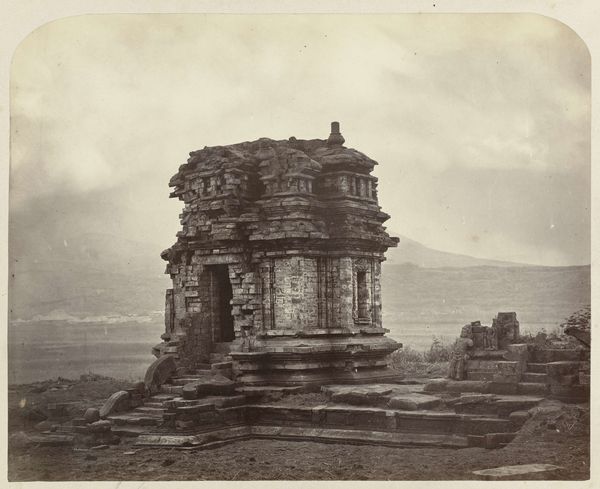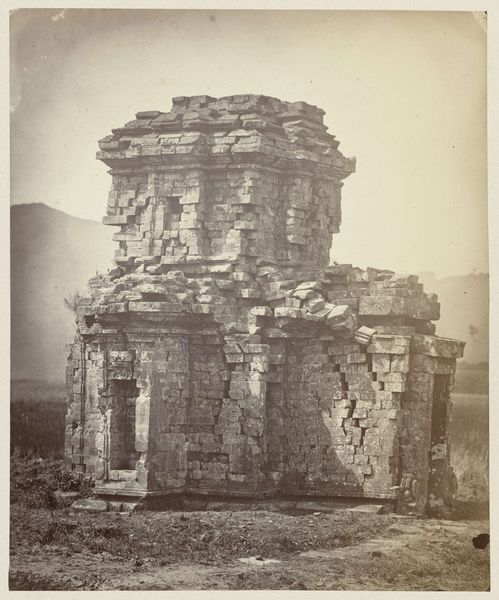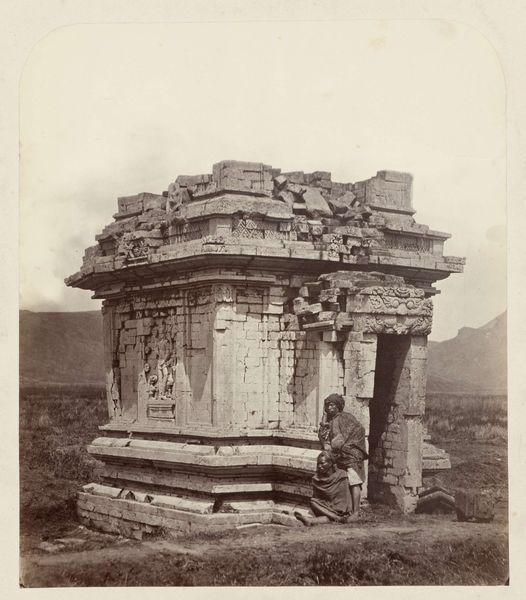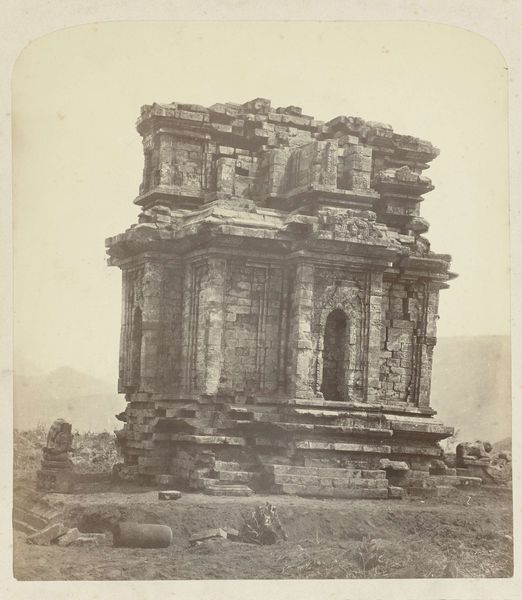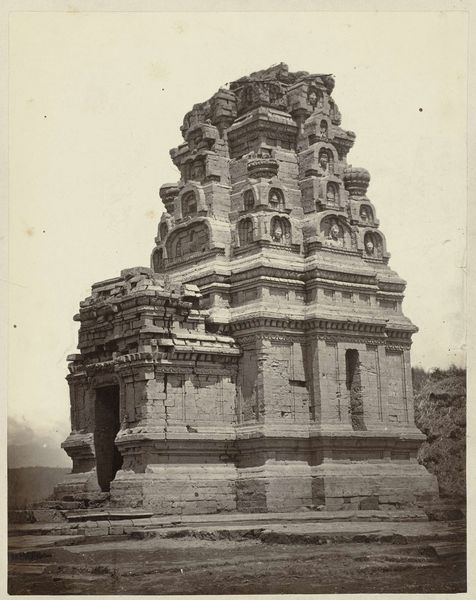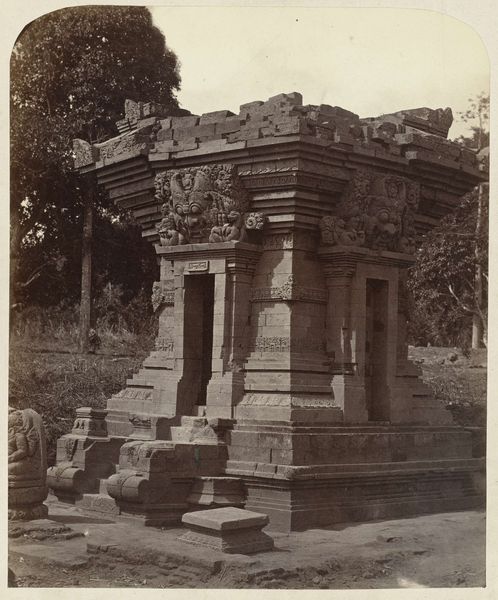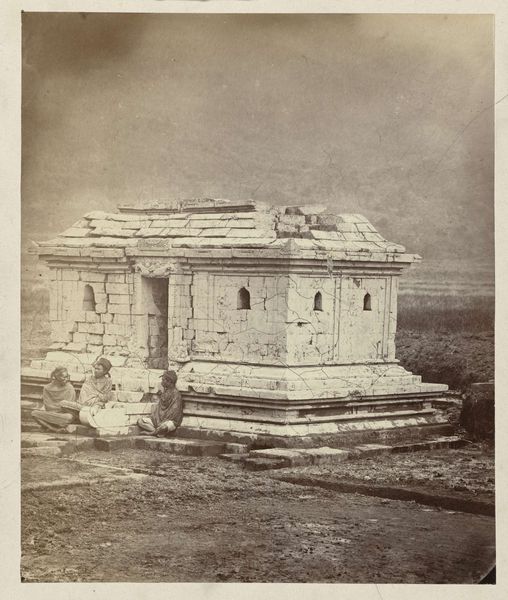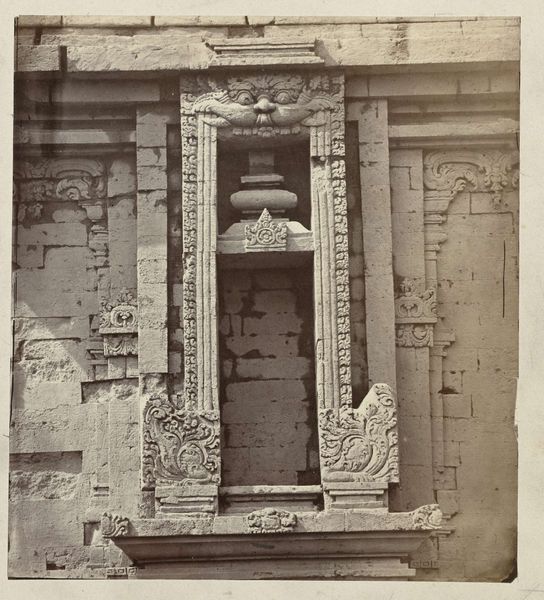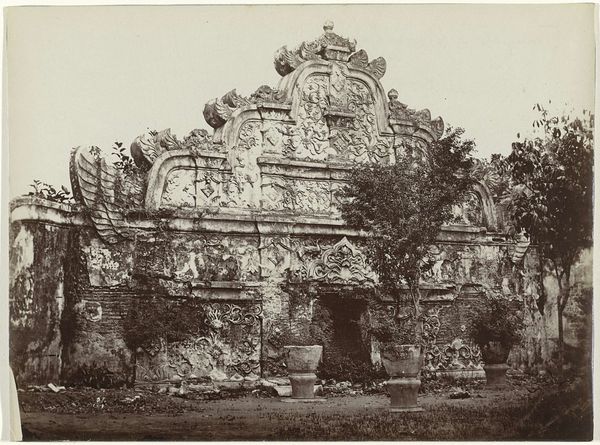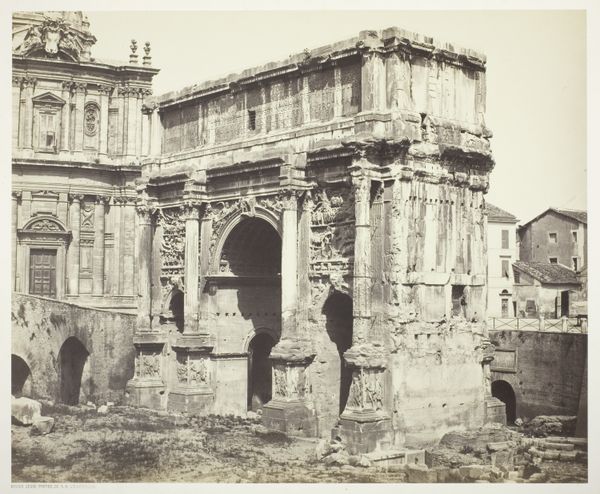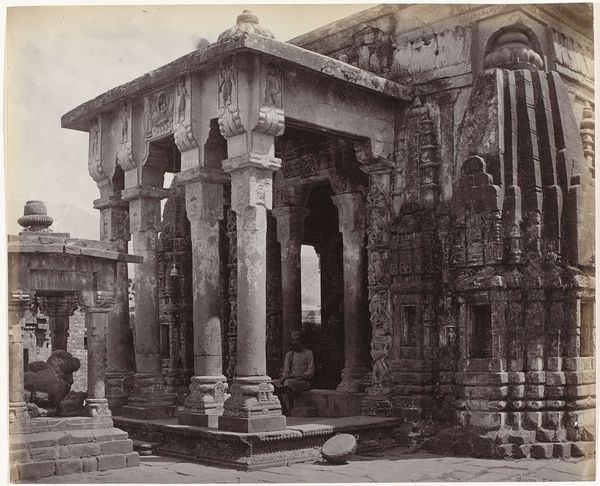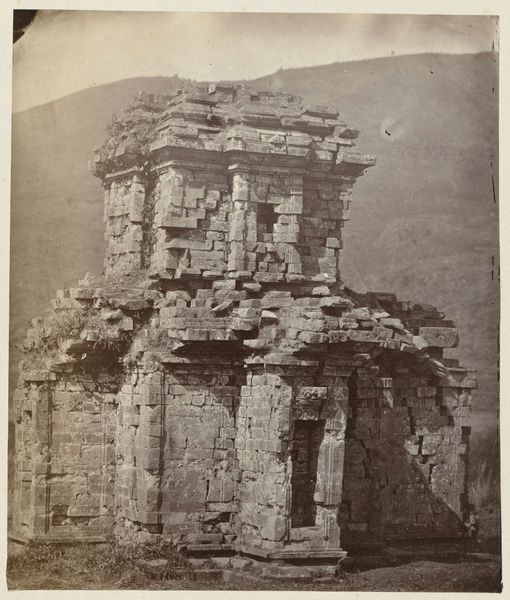
Candi Arjuna, general view showing the staicase projection and the entrance (west). Dieng plateau, Wonosobo district, Central Java province, 8th-9th century. Possibly 1864 - 1867
0:00
0:00
print, photography, architecture
# print
#
asian-art
#
landscape
#
photography
#
historical photography
#
19th century
#
architecture
#
statue
Dimensions: height 340 mm, width 290 mm
Copyright: Rijks Museum: Open Domain
This photograph by Isidore Kinsbergen captures the Candi Arjuna temple, built from stone in Central Java between the 8th and 9th centuries. Look closely, and you can appreciate the sheer labor involved in quarrying, transporting, and carving the stone blocks. The temple's appearance is defined by the stone itself – its weight, texture, and the way it weathers over time, all visible in Kinsbergen's photograph. The skilled labor required to construct this temple reflects deep cultural significance. Traditional Javanese craftsmanship, passed down through generations, shaped the very structure you see. This wasn't just construction; it was a creative practice embedded in community knowledge and artistic expression. Considering the temple’s material and construction methods helps us understand its social context. It represents not only a place of worship but also a testament to human ingenuity. Appreciating the craft involved challenges traditional art distinctions, revealing the artistry inherent in functional and spiritual structures.
Comments
No comments
Be the first to comment and join the conversation on the ultimate creative platform.

